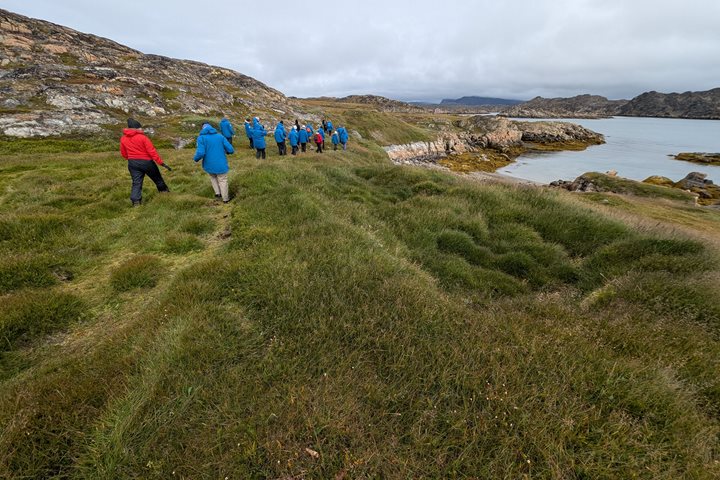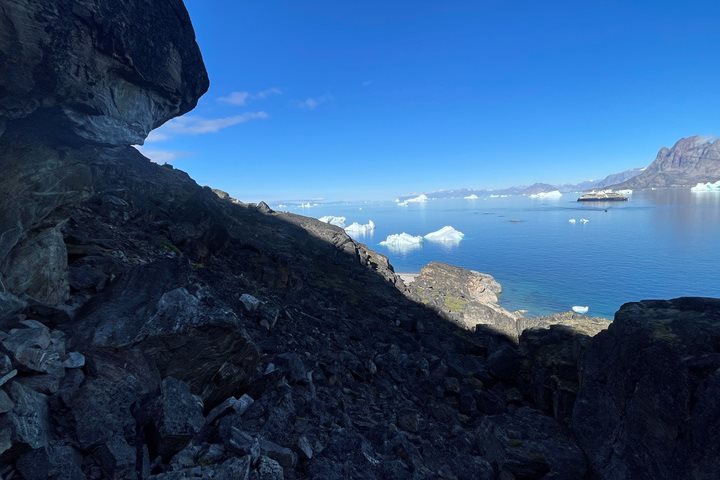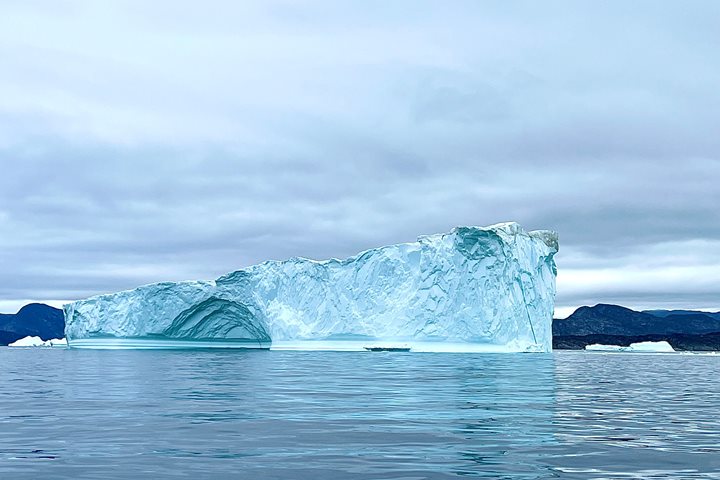We awoke to a beautiful, sunny morning as we approached Prins Christians Sund (Ikerasassuaq). The large icebergs surrounding us before entering the fjords had traveled from the Eastern Greenland ice sheet. The smaller icebergs encountered throughout the fjords were from tidewater and valley glaciers within the fjord system itself. We were surrounded by towering mountains and glaciers as we sailed through, heading from East to West Greenland. The wind subsided as we entered the narrowest part of the passage, and we enjoyed beautiful views of the rocks and ice.
Rob taught us about the cryosphere, specifically how glaciers form, different types of glaciers, and the importance of the Antarctic and Greenland ice sheets. During another morning presentation, Sissie took us on a journey to learn about Viking culture with photographs that showed everyday life throughout the centuries. Most notable among the artifacts, aside from the importance and role of Viking ships, was the repetition of intricate carved patterns within wood and stone.
Approaching Nanortalik by Zodiac in the early afternoon, the pops of color dotting the community buildings along the shore were further enhanced by the golden buttercups spreading throughout the natural landscape. We had the opportunity to choose between three different activities upon arriving on shore. The first group sought out flowers and birds. Many species of flowers were found, while observed bird species included wheatears, Icelandic gulls, a brent goose and her family, and red poles. This group also visited the old summer camp with teepee style structures that used to be covered in seal skin. The second group focused on photography. They took a walk among the flowers and around the church, looking for different perspectives to capture with their cameras. The third group learned about the history of Nanortalik. They explored the open-air museum which included several buildings (administrative, radio station, bakery, kayaks, hospital, and fishing). Each building held collections of representative artifacts that showcased the harsh conditions and the people’s rich traditions, survival, and resilience over generations.
The church was at the center of this coastal community, and Greenlandic song filled the space. Traditional songs that portrayed historic stories of the culture were played by a drum made of a polar bear stomach and a reindeer rod. Kayaks (qaqaks) are a historic and stable transportation mode within this community, evidenced by the displays and live presentation by locals within the museum. This quaint community truly encapsulates the spirit of Greenlandic culture.
Fog prevented an impromptu visit to a hot spring after dinner, so our night ended with a presentation by Andreas on the Northern Lights. We learned the physics behind how the aurora borealis forms as a result of solar storms radiating along the Earth’s magnetic poles.
Written by: Jill McNabnay and Rhonda O’Keefe







